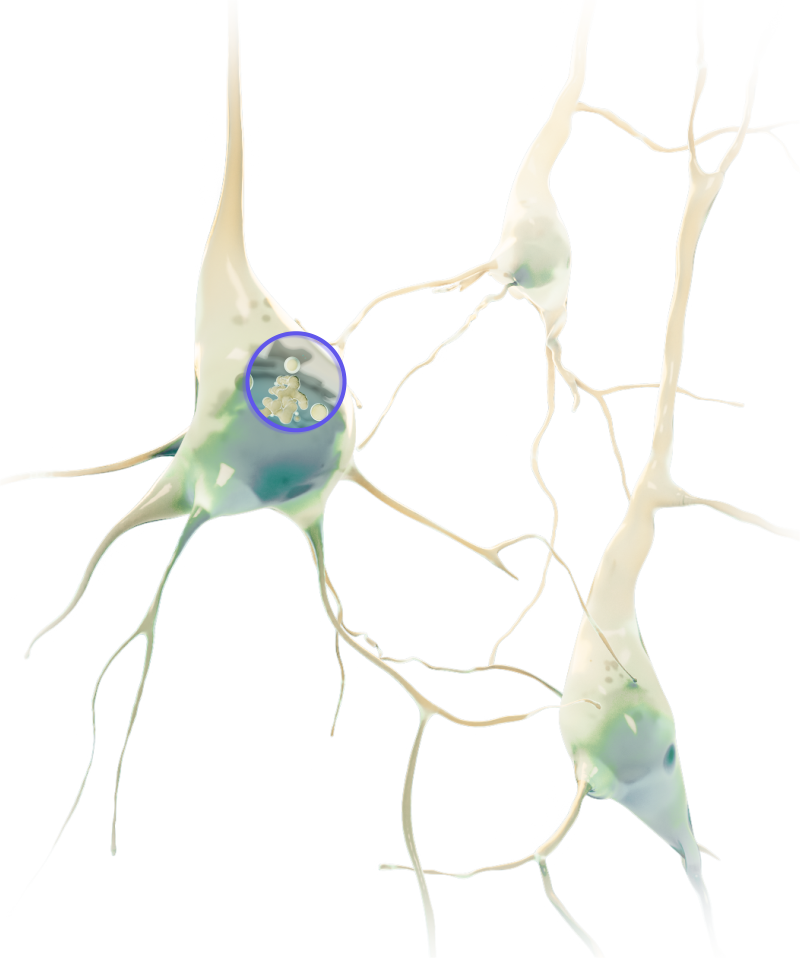
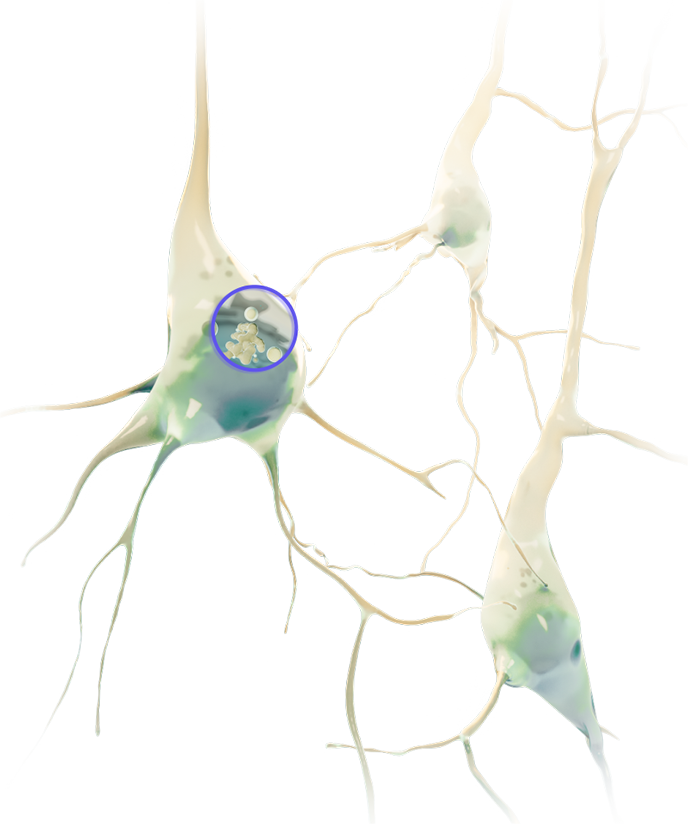
Our Science
The endolysosome transports critical proteins within the cell. It is an essential system of human cell biology. On the molecular level, it is regulated by the retromer complex. Disruption of key retromer complex proteins contributes to neurodegenerative disease.
The endolysosome is the cell's protein processing system.
The endolysosomal system comprises a series of interconnected waypoints within cells. Efficient molecular movement through these waypoints is important for maintaining cellular health. Particularly vital for healthy neuronal function, endolysosomal trafficking regulates how well neurons communicate with each other—a primary function of the brain—and is required to dispose of materials that are toxic to neurons.
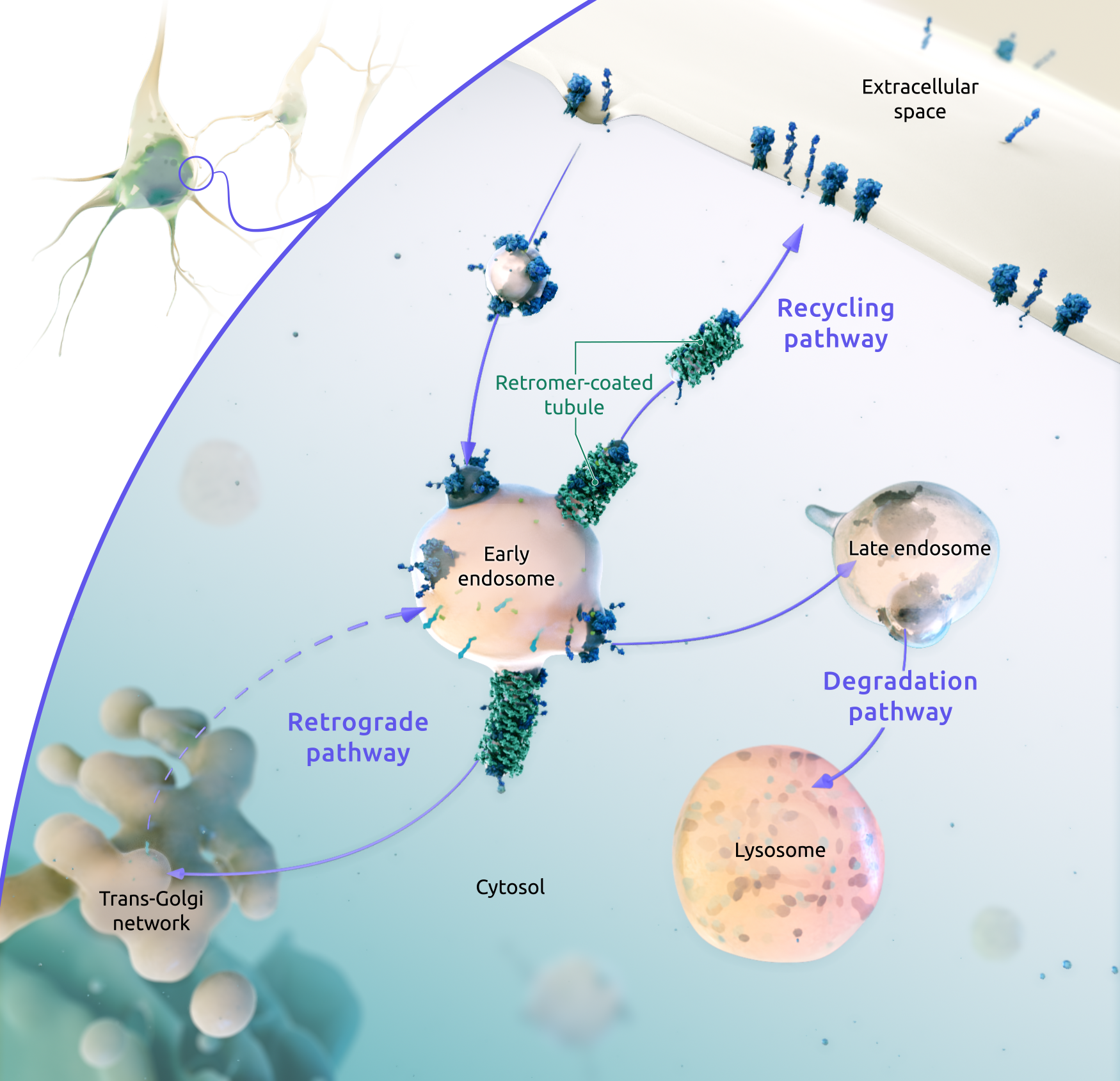
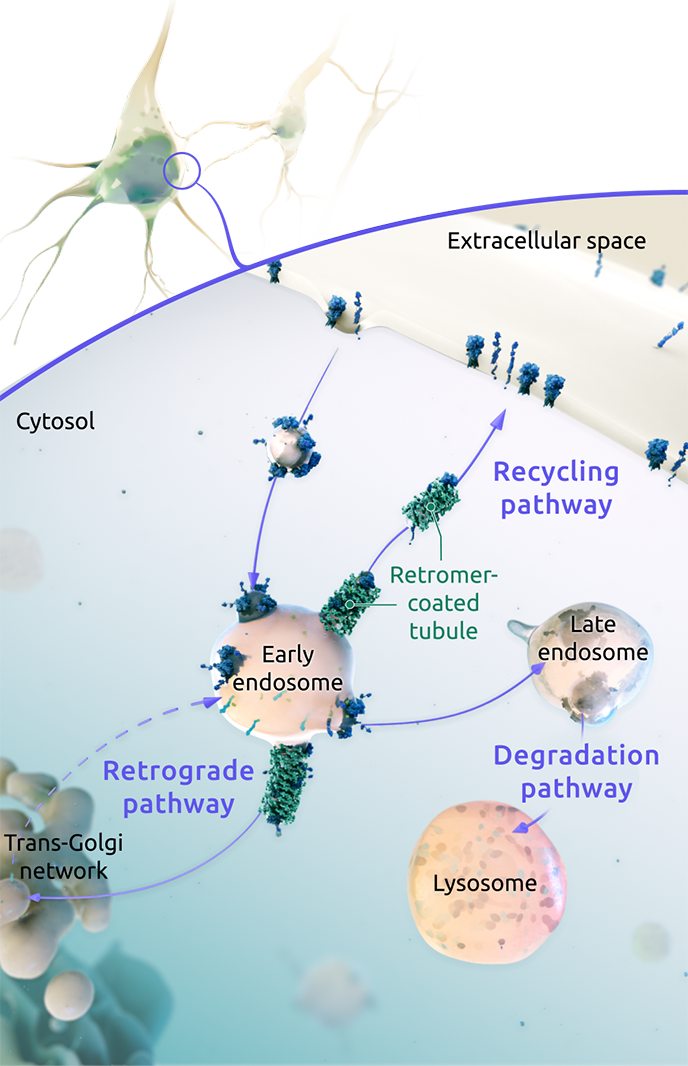
Traffic through the endolysosome is highly dynamic.
The retromer complex is the master regulator of endolysosomal transport.
Retromer—a large protein complex—regulates the movement of proteins through the endolysosomal system. The retromer complex comprises multiple subunits, which interact and work together to transport cargo. The components of the retromer complex include a cargo receptor and a trimeric core.
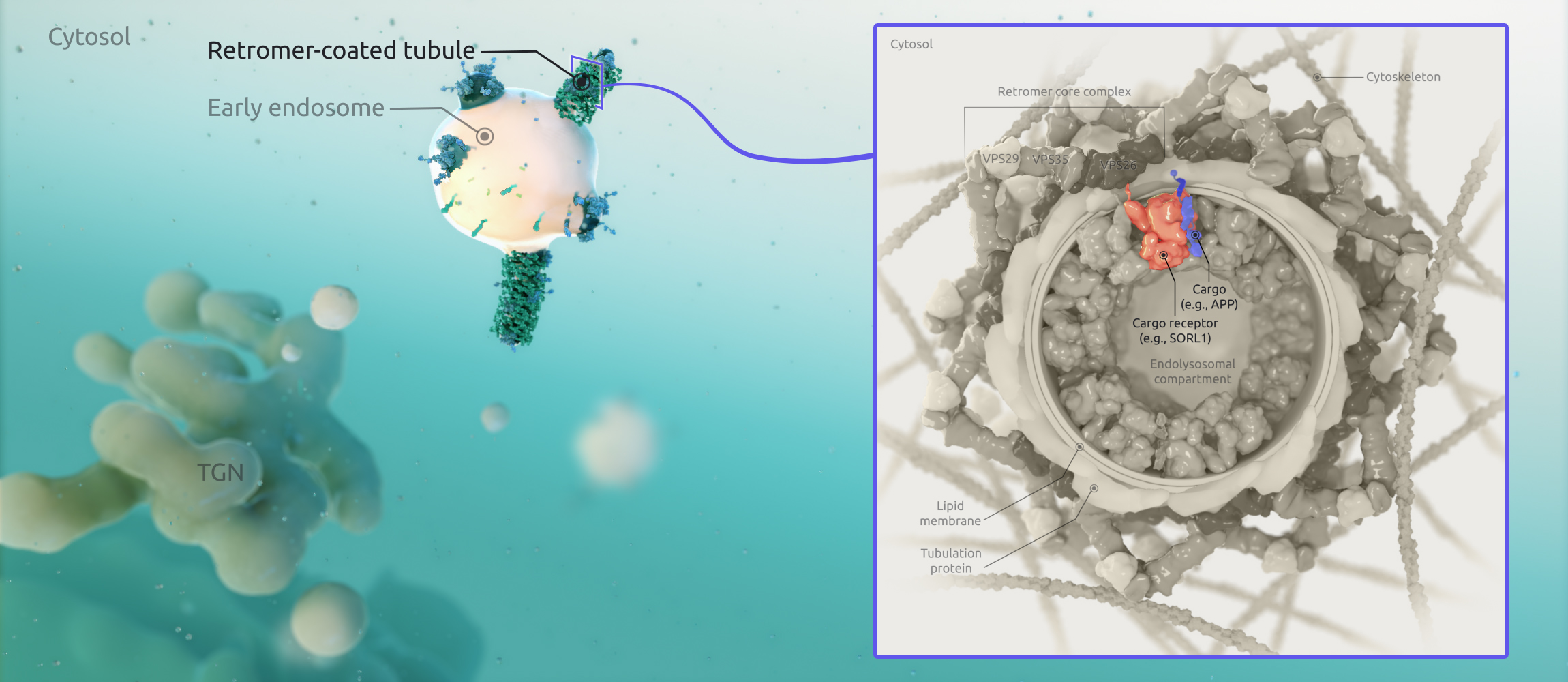
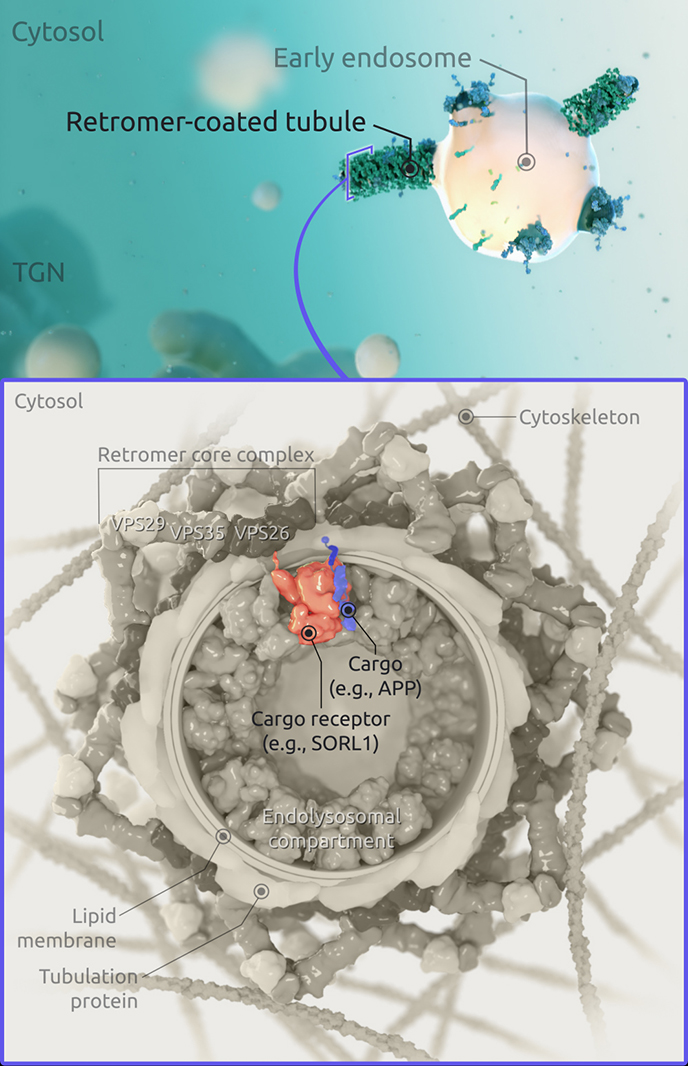
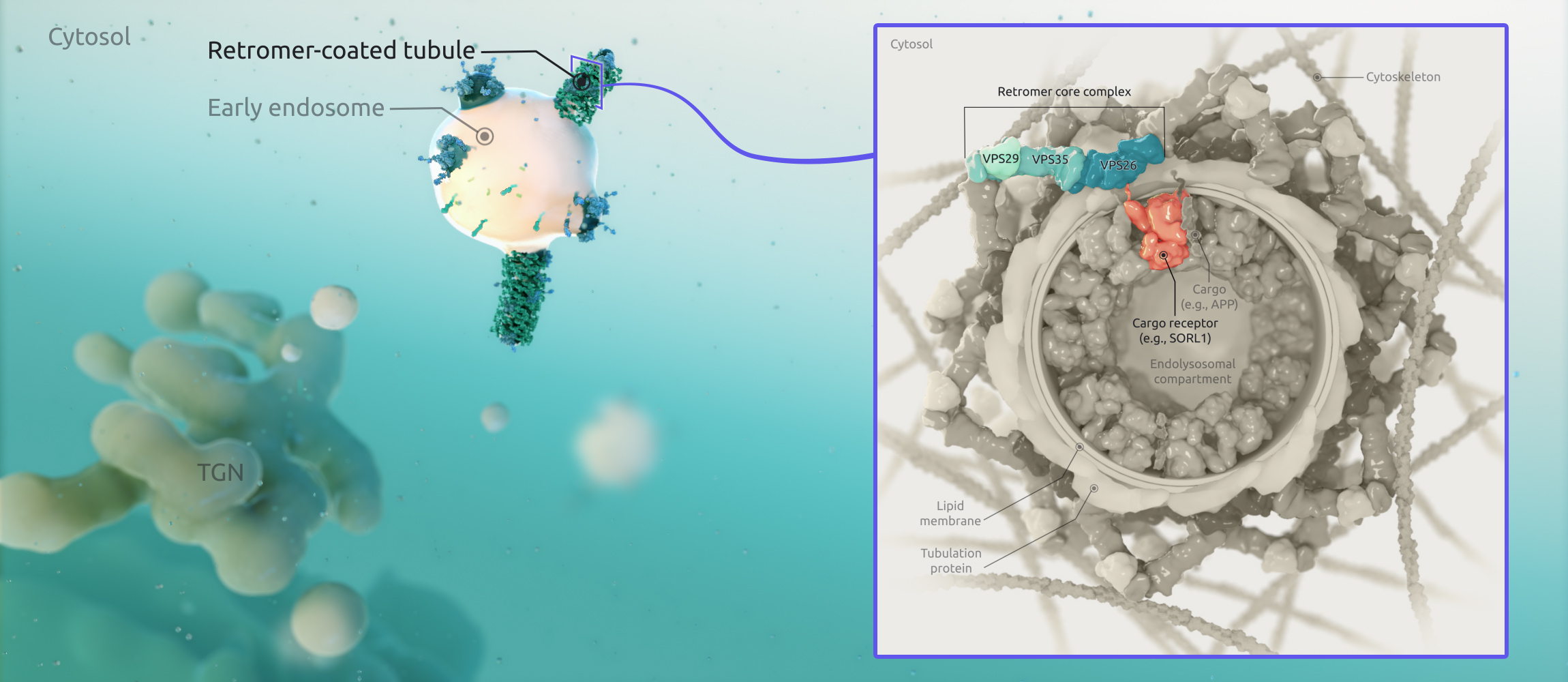
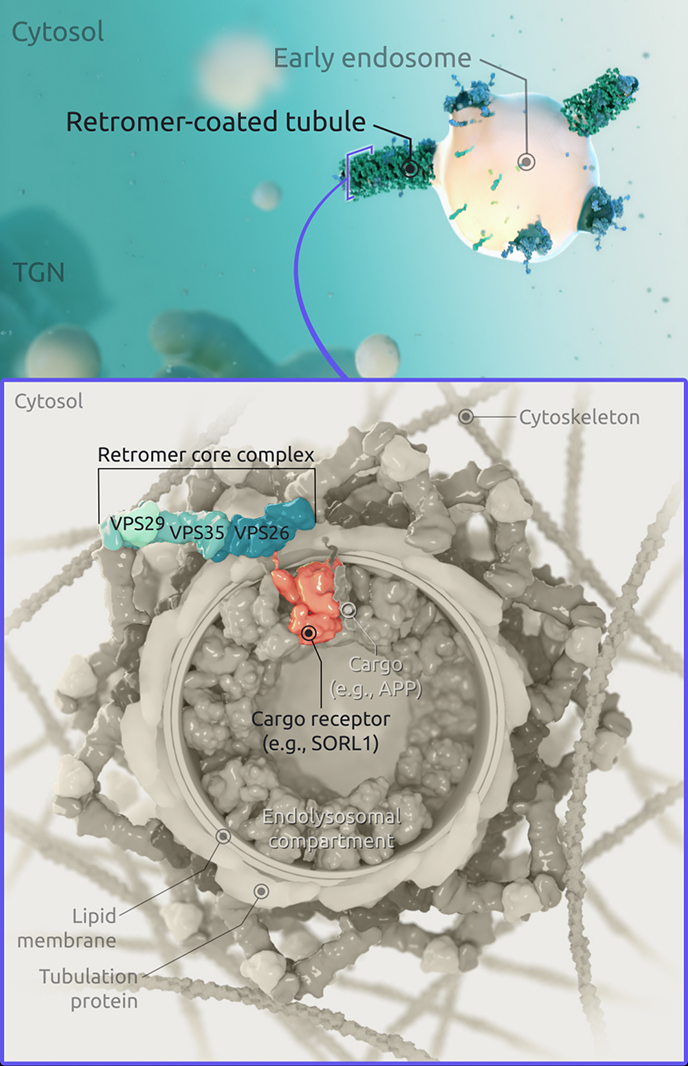
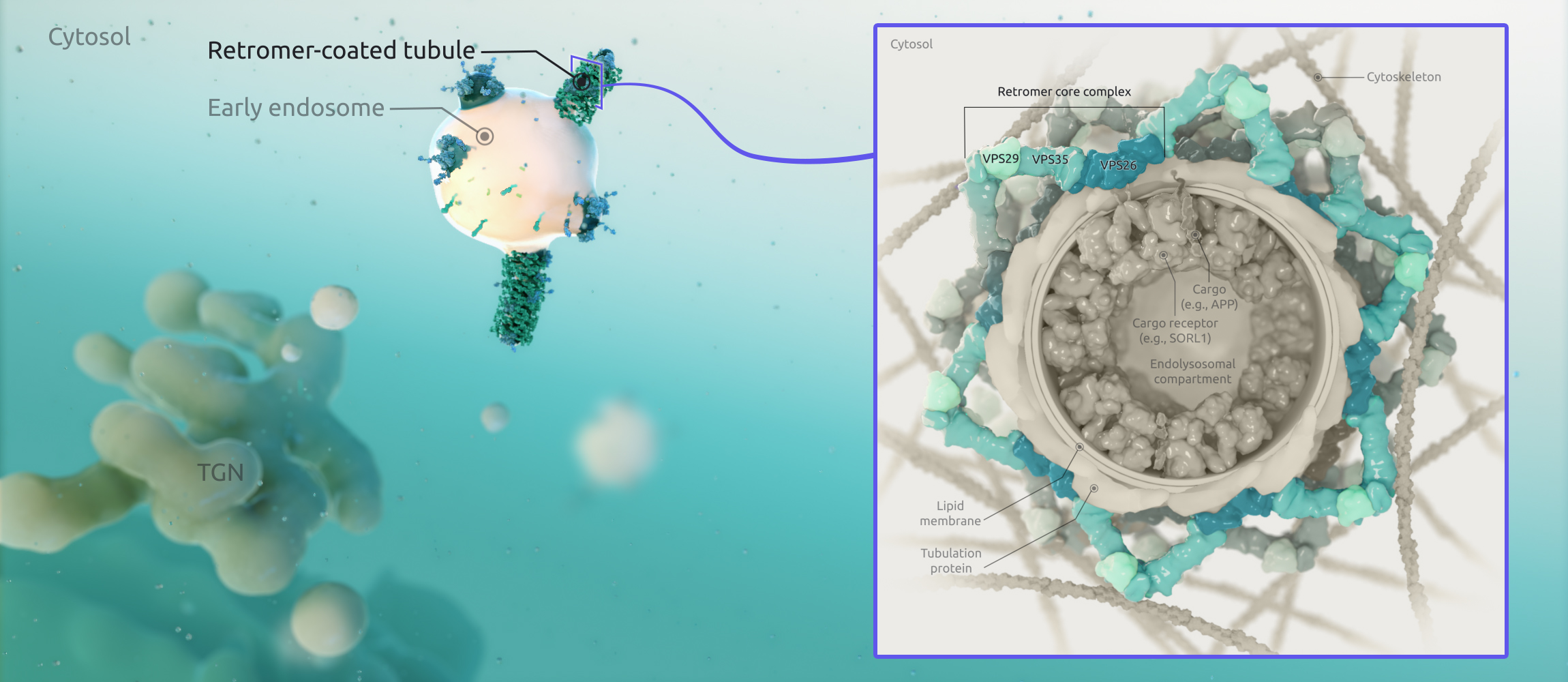
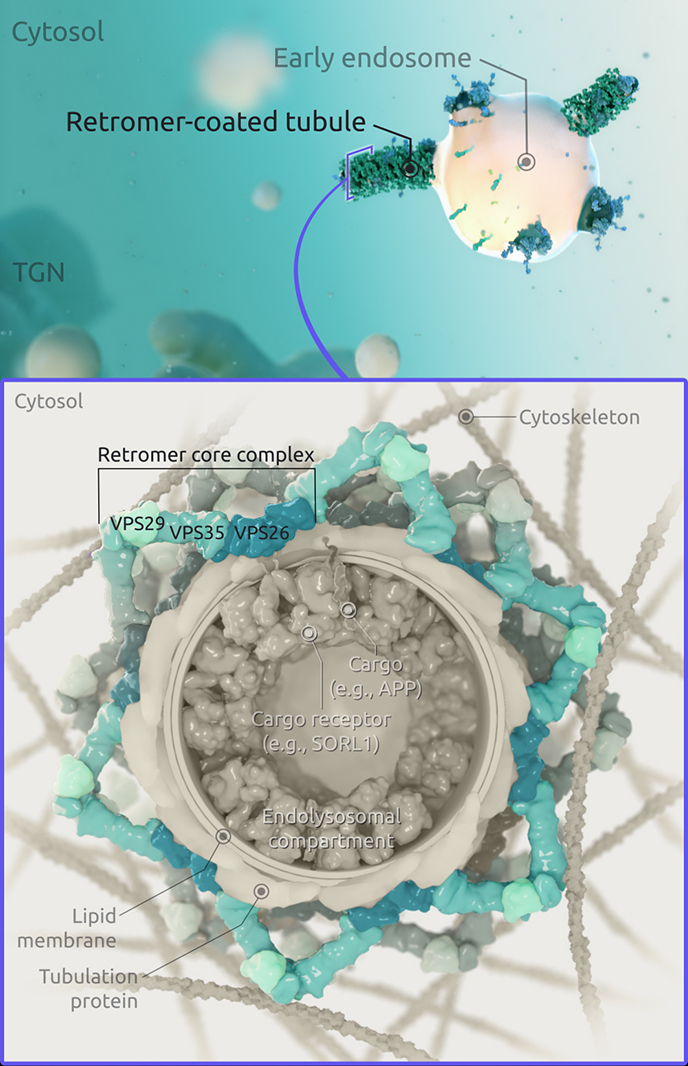
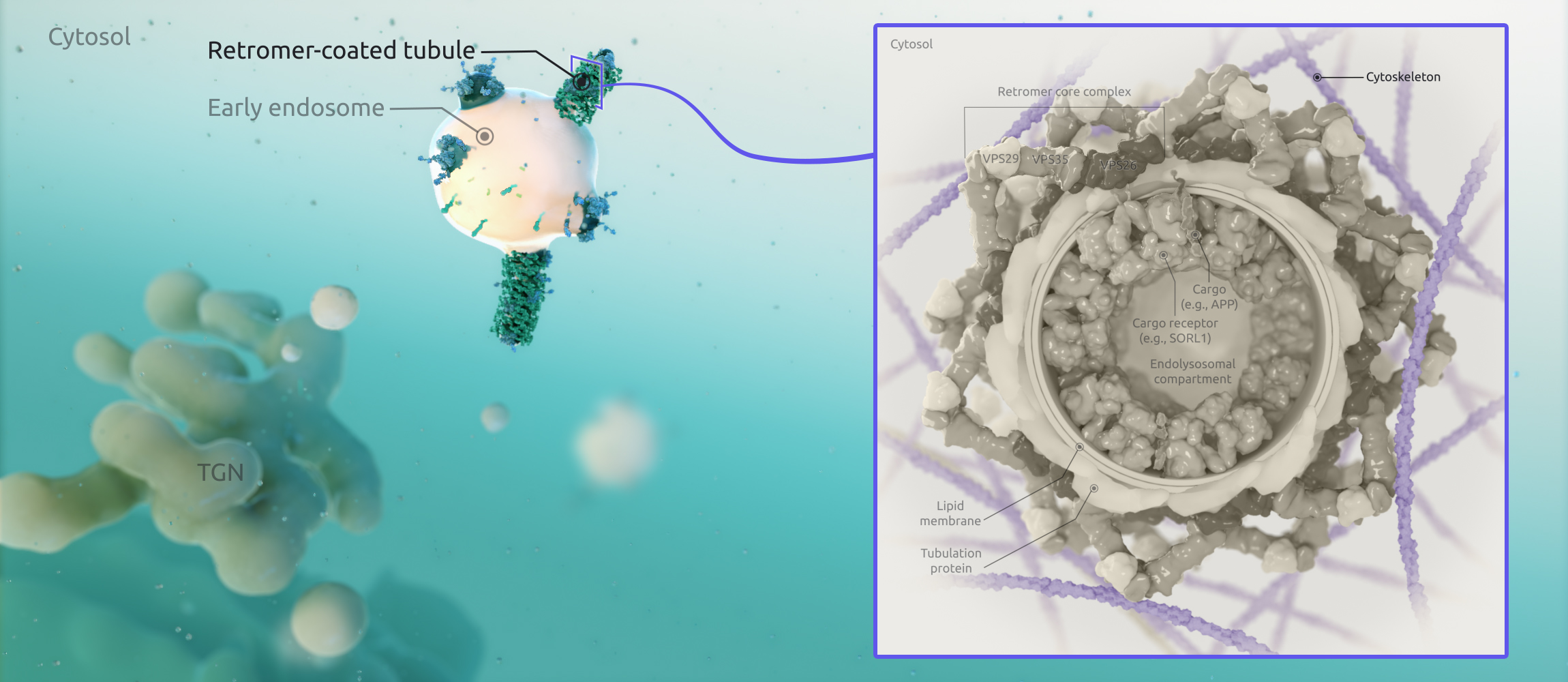
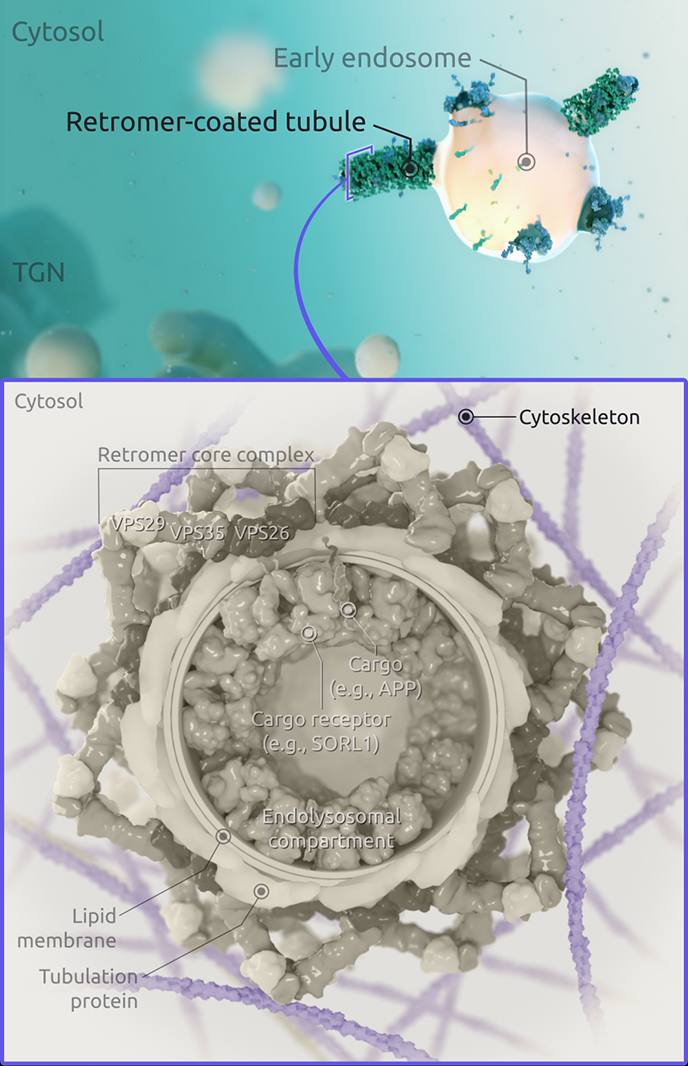
How the retromer complex transports cargo
Disruption of the endolysosomal system has been shown to contribute to neurodegenerative disease.
For some individuals living with diseases like Alzheimer’s and Parkinson’s, genetic variants corresponding to critical proteins of the retromer complex—including SORL1 and the trimeric core—have been causally linked to disease onset. Defects in the retromer pathway trigger these diseases by disrupting the endolysosomal system.
Endolysosomal disruption is a triggering event for other neurodegenerative diseases like ALS and tauopathies. While retromer proteins might not be primarily defective in these diseases, retromer enhancement can also remediate the causal mechanisms.
With strategies informed by human genetics, we are designing therapies to enhance molecular transport through the endolysosomal system.